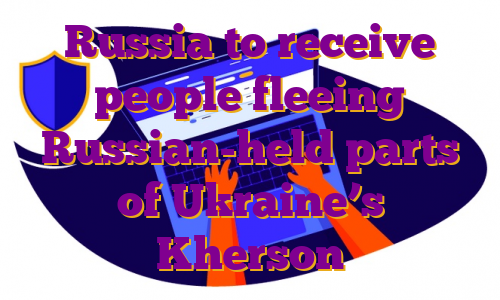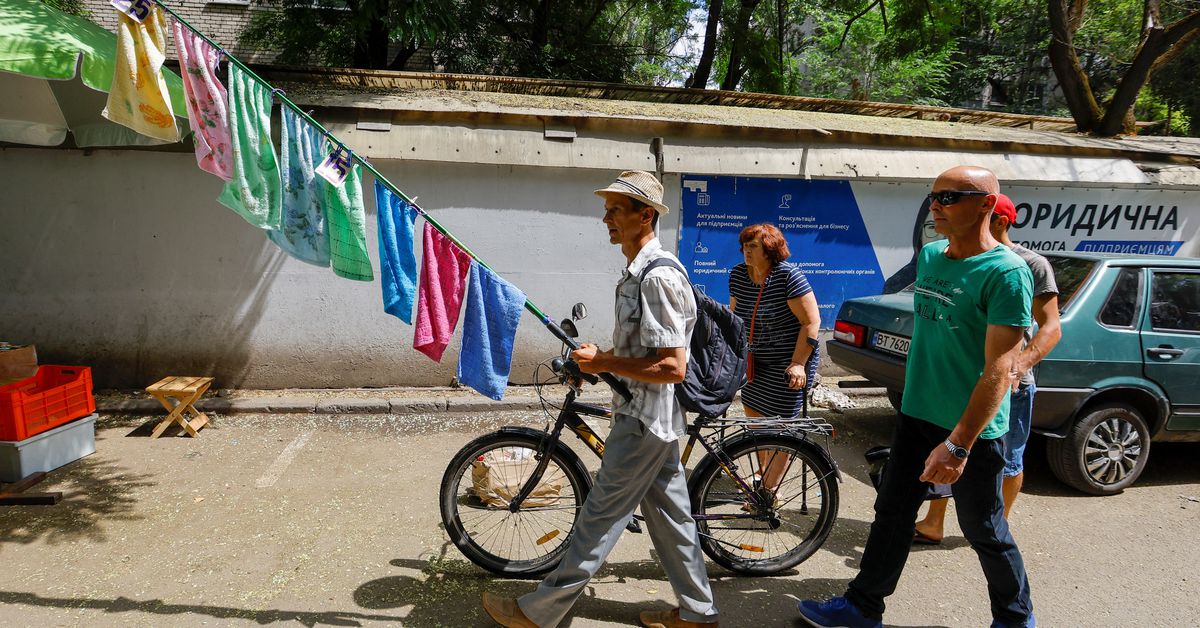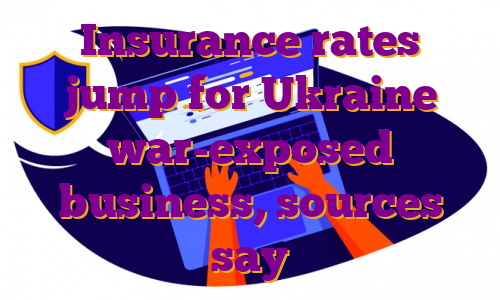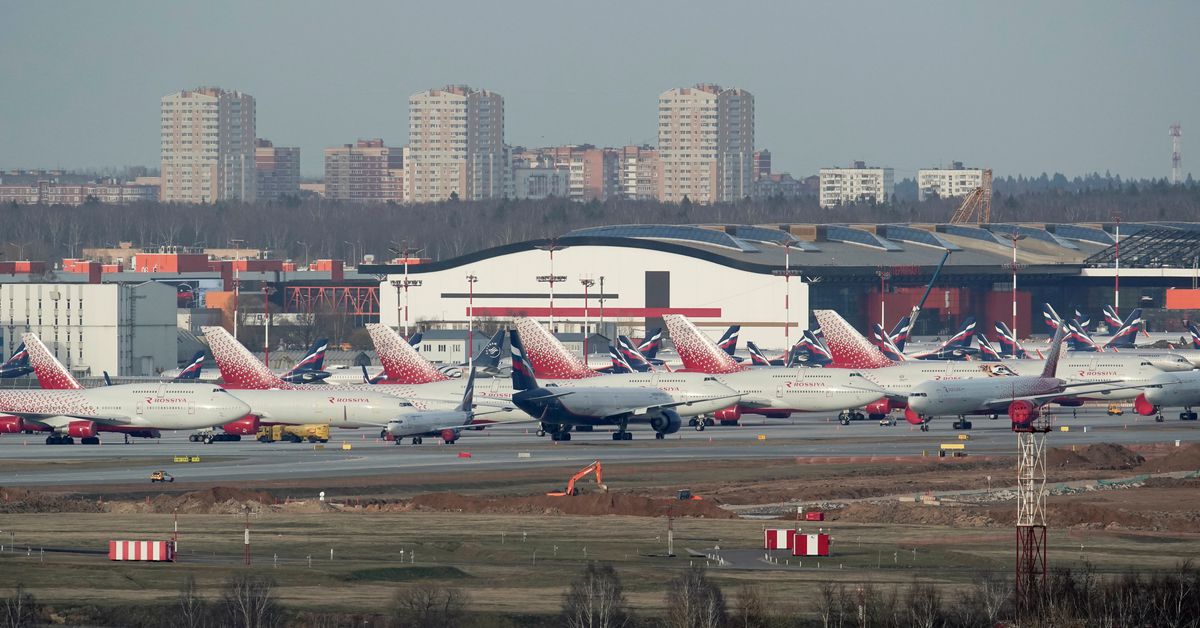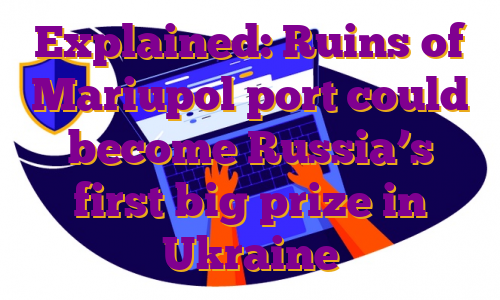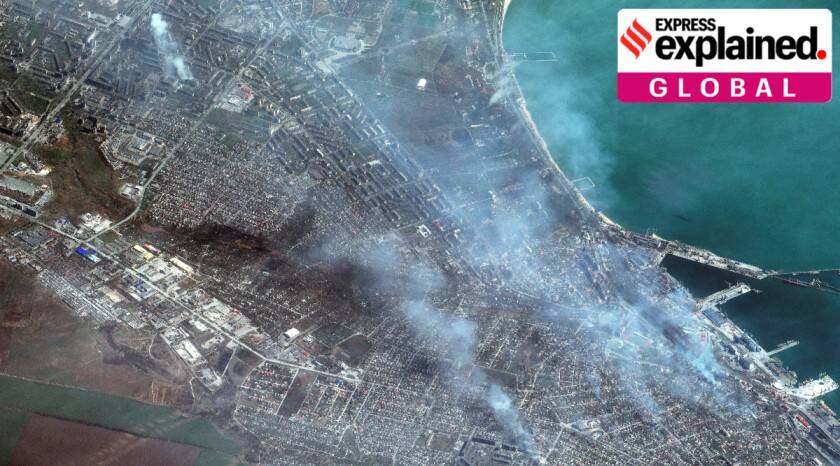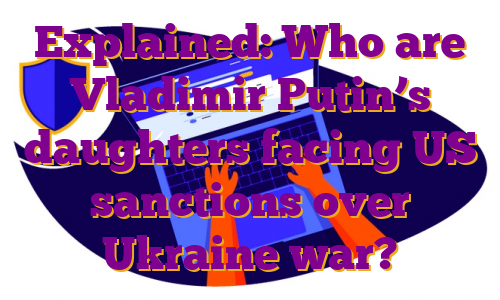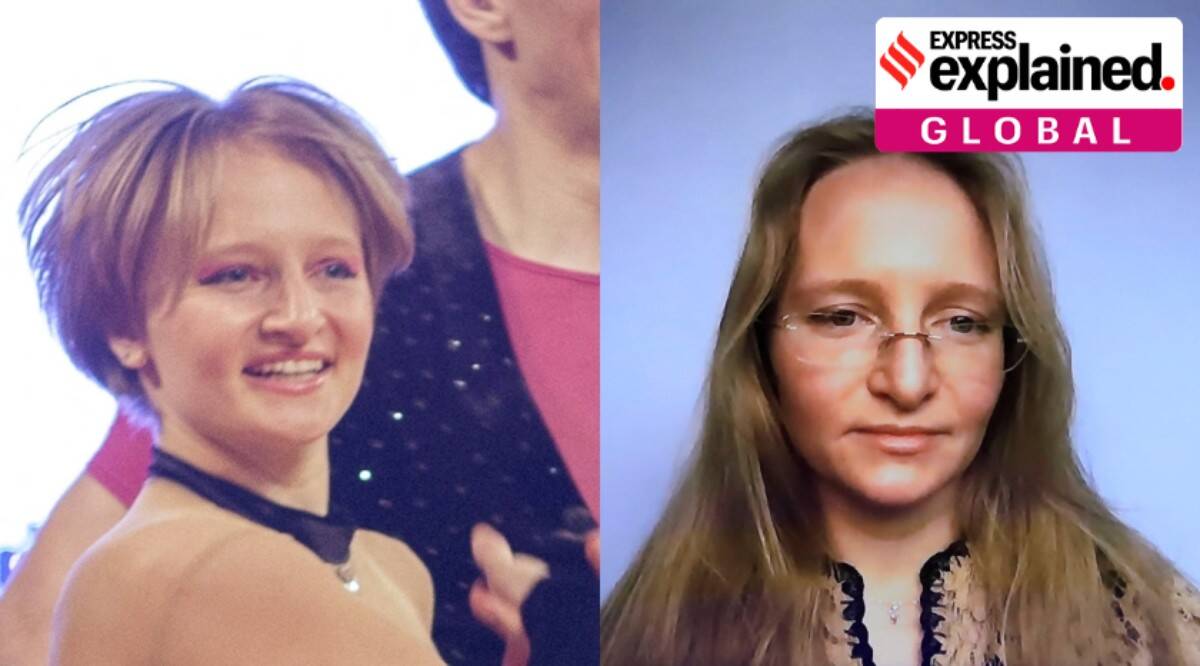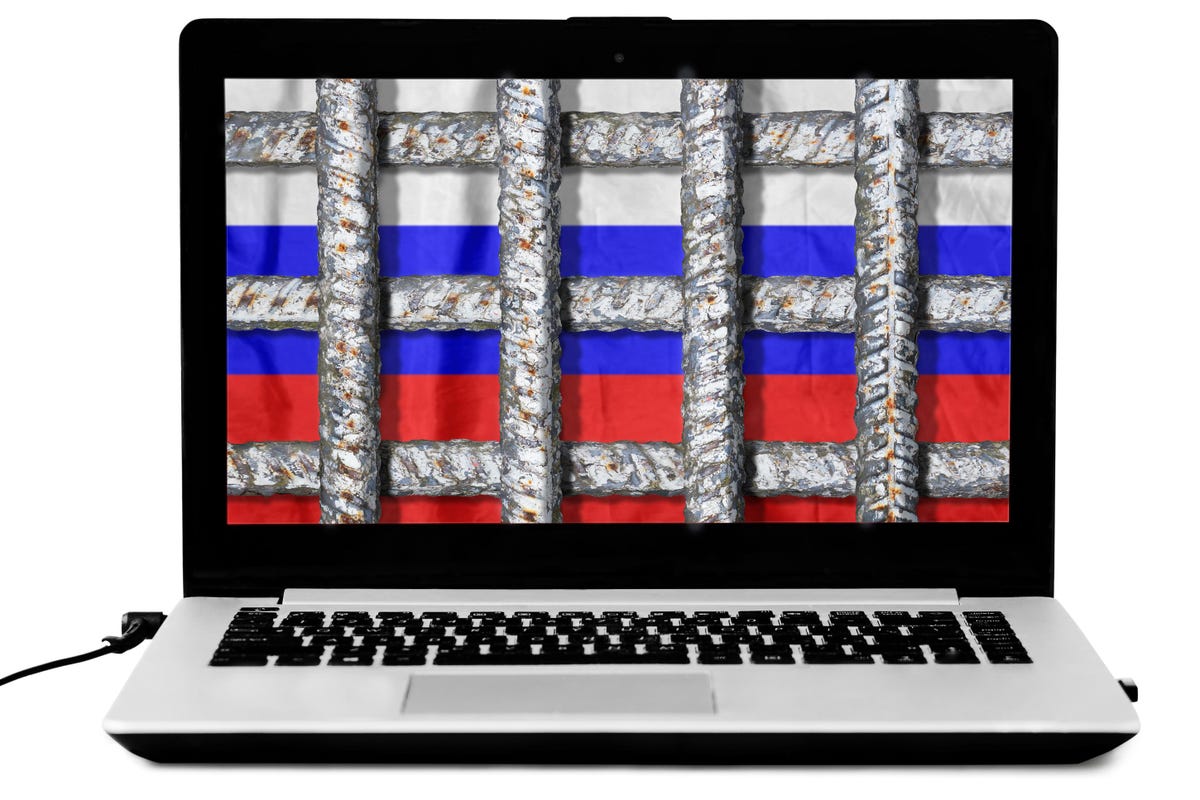LONDON, Oct 13 (Reuters) – A Russian region adjoining Ukraine said it was preparing to receive refugees from the Russian-held part of Ukraine’s Kherson province, after its Russian-appointed leader proposed on Thursday that residents leave to seek safety as Ukrainian forces advance.Most of the Kherson region was seized in the first days of Russia’s invasion as it sent in troops from adjoining Crimea. It is one of four partly occupied Ukrainian regions that Russia proclaimed as its own last month in a move overwhelmingly condemned on Wednesday by the U.N. General Assembly.However, since August it has been the scene of a major advance by Ukrainian forces.Register now for FREE unlimited access to Reuters.comIn a video statement on Telegram, Vladimir Saldo publicly asked for government help in moving civilians to safer regions of Russia.”Every day, the cities of Kherson region are subjected to missile attacks,” Saldo said.”As such, the leadership of Kherson administration has decided to provide Kherson families with the option to travel to other regions of the Russian Federation to rest and study,” he said, adding that people should “leave with their children”.He said the suggestion applied foremost to residents on the west bank of the Dnipro River – an area that includes the regional capital, Kherson.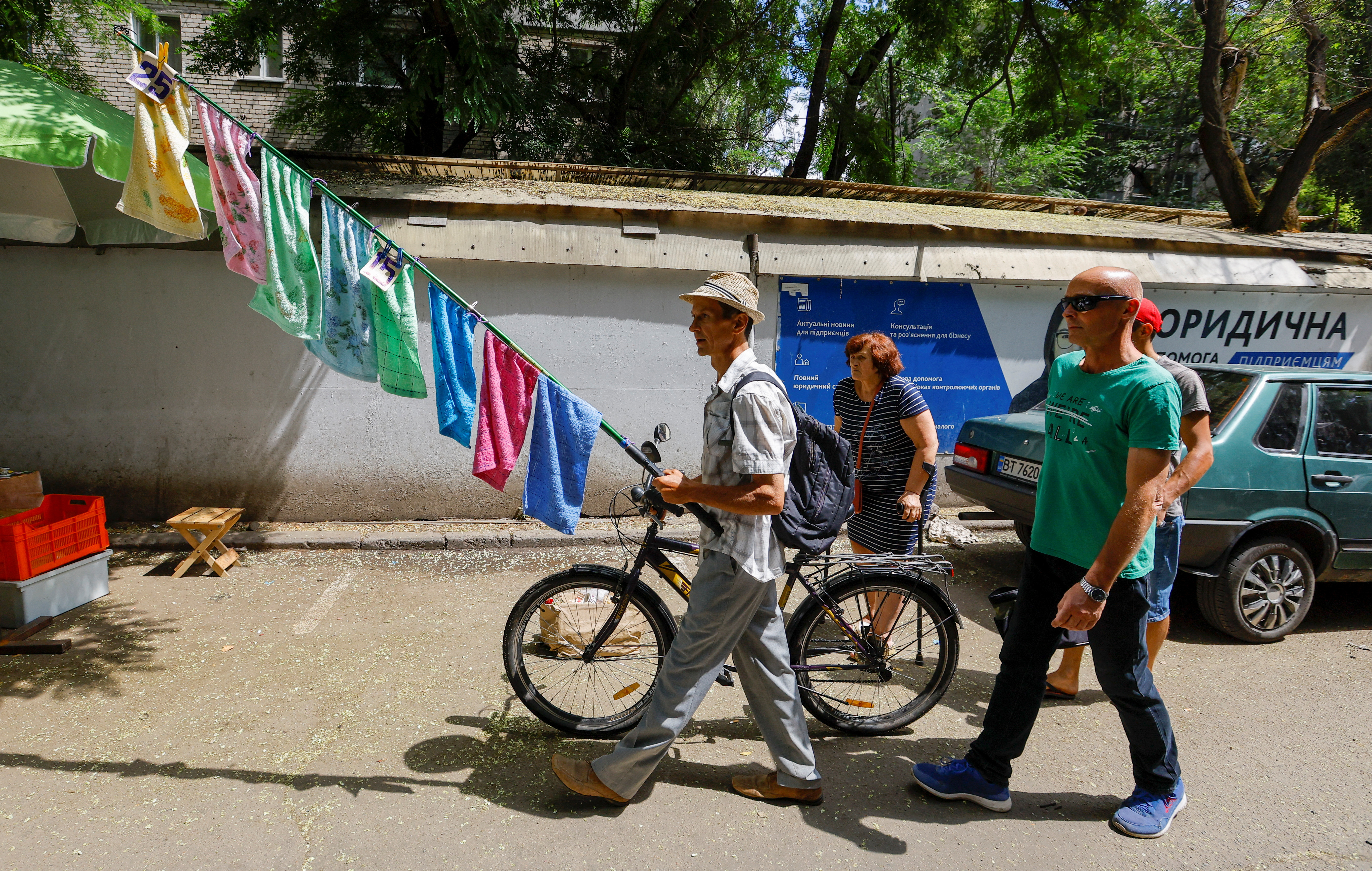 Local residents visit a street market during Ukraine-Russia conflict in the Russia-controlled city of Kherson, Ukraine July 26, 2022. REUTERS/Alexander Ermochenko”But at the same time, we suggested that all residents of the Kherson region, if there is such a desire, to protect themselves from the consequences of missile strikes, also go to other regions.”The TASS news agency quoted the governor of Russia’s Rostov region, Vasily Golubev, as saying that a first group of people from Kherson would arrive there on Friday.”The Rostov region will accept and accommodate everyone who wants to come to us from the Kherson region,” he said.Russian Deputy Prime Minister Marat Khusnullin said those leaving Kherson would be provided with free accommodation and necessities – and, if they decided to remain outside Kherson permanently, with housing.Russia’s incorporation of the four regions has been denounced by Kyiv and the West as an illegal annexation like that of Crimea, which Russia seized in 2014. At the U.N. General Assembly, 143 of 193 countries condemned it in Wednesday’s vote.Ukrainian authorities say hundreds of thousands of Kherson’s residents have fled, mostly to unoccupied parts of Ukraine, including half the pre-war population of the regional capital.Any major territorial losses in Kherson would restrict Russia’s access to the Crimean peninsula further south, whose return Kyiv has coveted since 2014.Register now for FREE unlimited access to Reuters.comReporting by Reuters; Editing by Kevin Liffey, Mark Trevelyan and Sandra MalerOur Standards: The Thomson Reuters Trust Principles. .
Local residents visit a street market during Ukraine-Russia conflict in the Russia-controlled city of Kherson, Ukraine July 26, 2022. REUTERS/Alexander Ermochenko”But at the same time, we suggested that all residents of the Kherson region, if there is such a desire, to protect themselves from the consequences of missile strikes, also go to other regions.”The TASS news agency quoted the governor of Russia’s Rostov region, Vasily Golubev, as saying that a first group of people from Kherson would arrive there on Friday.”The Rostov region will accept and accommodate everyone who wants to come to us from the Kherson region,” he said.Russian Deputy Prime Minister Marat Khusnullin said those leaving Kherson would be provided with free accommodation and necessities – and, if they decided to remain outside Kherson permanently, with housing.Russia’s incorporation of the four regions has been denounced by Kyiv and the West as an illegal annexation like that of Crimea, which Russia seized in 2014. At the U.N. General Assembly, 143 of 193 countries condemned it in Wednesday’s vote.Ukrainian authorities say hundreds of thousands of Kherson’s residents have fled, mostly to unoccupied parts of Ukraine, including half the pre-war population of the regional capital.Any major territorial losses in Kherson would restrict Russia’s access to the Crimean peninsula further south, whose return Kyiv has coveted since 2014.Register now for FREE unlimited access to Reuters.comReporting by Reuters; Editing by Kevin Liffey, Mark Trevelyan and Sandra MalerOur Standards: The Thomson Reuters Trust Principles. .
Insurance rates jump for Ukraine war-exposed business, sources say
Planes of Aeroflot and Rossiya Airlines are seen parked at Sheremetyevo International Airport, as the spread of the coronavirus disease (COVID-19) continues, outside Moscow, Russia April 8, 2020 REUTERS/Tatyana Makeyeva/File PhotoRegister now for FREE unlimited access to Reuters.comLONDON, May 30 (Reuters) – Insurance premiums are doubling or more for some aviation and marine business particularly exposed to the war in Ukraine, increasing costs for airline and shipping firms, industry sources say.Global commercial insurance premiums rose 11% on average in the first quarter, according to insurance broker Marsh, which said the war was putting upward pressure on rates.But the overall figure masks sharper moves in some sectors, and only covers the first five weeks following the invasion.Register now for FREE unlimited access to Reuters.comWar is typically excluded from mainstream insurance policies. Customers buy extra war cover on top.Garrett Hanrahan, global head of aviation at Marsh, said aviation war insurance was no longer available for Ukraine, Russia and Belarus as a result of the conflict.For the rest of the world, aviation war cover has doubled, as insurers try to recoup some of their losses, he said.”The hull war market is beginning to reflate itself through rate rises.”The conflict, which Russia calls a “special military operation”, could lead to insurance losses of $16 billion-$35 billion in so-called “specialty” insurance classes such as aviation, marine, trade credit, political risk and cyber, S&P Global said in a report. read more Aviation insurance claims alone could total $15 billion, S&P Global said, with hundreds of leased planes stranded in Russia as a result of western sanctions and Russian countermeasures.One aircraft lessor described recent rate increases on its insurance as “not a pretty sight”. read more Some aircraft lessors – a particularly exposed sector of the market because their planes are stuck in Russia – were now having to pay 10 times their original premium, one underwriter said, while another said insurers could “name their price” to lessors.In ship insurance, policyholders pay an additional “breach” premium when a ship enters particularly dangerous waters, locations which are updated by the Lloyd’s market.For the area around Russian and Ukrainian waters in the Black Sea and Sea of Avov, this has increased multiple times, three insurance sources said, to around 5% of the value of the ship, from 0.025% before the invasion, amounting to millions of dollars for a seven-day policy.Each time a ship goes into those waters, it has to pay that extra premium.Rates for ships going into other Russian waters have also risen by at least 50% after the Lloyd’s market classified all Russian ports as high risk, two of the sources said.Because of the dangers, some marine insurers have also stopped providing cover for the region. read more Register now for FREE unlimited access to Reuters.comReporting by Carolyn Cohn, Jonathan Saul and Noor Zainab Hussain, Editing by Angus MacSwanOur Standards: The Thomson Reuters Trust Principles. .
Explained: Ruins of Mariupol port could become Russia’s first big prize in Ukraine
The Sea of Azov port of Mariupol, reduced to a wasteland by seven weeks of siege and bombardment that Ukraine says killed tens of thousands of civilians, could become the first big city captured by Russia since its invasion.
Russia said on Wednesday more than 1,000 Ukrainian marines, among the last defenders holed up in the Azovstal industrial district, had surrendered, though Ukraine did not confirm that.
🗞️ Subscribe Now: Get Express Premium to access the best Election reporting and analysis 🗞️
Here is why the city’s capture would be important.
STRATEGIC LOCATION
Mariupol, home to more than 400,000 people before the war, is the biggest Ukrainian city on the Sea of Azov and the main port serving the industries and agriculture of eastern Ukraine. It is also the site of some of Ukraine’s biggest metals plants.
On the eve of the war, it was the biggest city still held by Ukrainian authorities in the two eastern provinces known as the Donbas, which Moscow has demanded Ukraine cede to pro-Russian separatists.
Its capture would give Russia full control of the Sea of Azov coast, and a secure overland bridge linking mainland Russia and pro-Russian separatist territory in the east with the Crimea peninsula that Moscow seized and annexed in 2014.
It would unite Russian forces on two of the main axes of the invasion, and free them up to join an expected new offensive against the main Ukrainian force in the east.
Prominent among the Ukrainian forces that have defended Mariupol is the Azov Regiment, a militia with far right origins incorporated into Ukraine’s national guard. Russia has portrayed destroying that group as one of its main war aims.
HUMANITARIAN IMPACT
The siege of Mariupol has been the worst humanitarian catastrophe of the conflict, described by Kyiv as a war crime. Ukrainian officials say at least 20,000 civilians were killed there by Russian forces employing tactics of mass destruction used in earlier campaigns in Syria and Chechnya.
International organisations such as the Red Cross and the United Nations say they believe thousands died but the extent of suffering cannot be assessed yet because the city has been cut off.
Ukrainian officials have said around a third of the population escaped before the siege, a similar number got out during it, while around 160,000 were trapped inside. They sheltered for weeks in cellars with no power or heat, or access to outside shipments of food, water or medicine.
Daily attempts to send convoys to bring in aid and evacuate civilians failed throughout the siege, with Ukraine blaming Russia for looting shipments and refusing to let buses pass through the blockade. Moscow said Ukraine was to blame for failing to observe ceasefires.
Bodies have been buried in mass graves or makeshift graves in gardens. Ukraine says Russia has brought in mobile crematorium trucks to burn bodies and destroy evidence of killings.
Among the major incidents that drew international outcry was the bombing of a maternity hospital on March 9, when wounded pregnant women were photographed being carried out of rubble. A week later, the city’s main drama theatre was destroyed. Ukraine says hundreds of people were sheltering in its basement, and it has not been able to determine how many were killed. The word “children” had been spelled out on the street in front of the building, visible from space.
Russia denies targeting civilians in Mariupol and has said, without presenting evidence, that incidents including the theatre bombing and maternity hospital attack were staged. Kyiv and its Western allies dismiss this as a smear to deflect blame.
Ukraine says Russia forcibly deported thousands of Mariupol residents to Russia, including some unaccompanied children it views as having been kidnapped. Moscow denies this and says it has taken in refugees.
WHAT NEXT?
Western countries believe Russia’s initial war aim was to quickly topple the government in Kyiv, but Moscow has had to abandon that goal after armoured columns bearing down on the capital were repelled. Russia withdrew from northern Ukraine at the start of April and has said its focus is now on the areas claimed by the separatists in the east.
In recent days, a new Russian column has been moving into eastern Ukraine near the town of Izyum to the north of the Donbas. The fall of Mariupol could free up Russian troops in the south of the Donbas to mount an assault on Ukrainian forces from two directions.
Claiming its first big prize in eastern Ukraine could also give Russia a stronger position to negotiate at any peace talks.
!function(f,b,e,v,n,t,s)
{if(f.fbq)return;n=f.fbq=function(){n.callMethod?
n.callMethod.apply(n,arguments):n.queue.push(arguments)};
if(!f._fbq)f._fbq=n;n.push=n;n.loaded=!0;n.version=’2.0′;
n.queue=[];t=b.createElement(e);t.async=!0;
t.src=v;s=b.getElementsByTagName(e)[0];
s.parentNode.insertBefore(t,s)}(window, document,’script’,
‘https://connect.facebook.net/en_US/fbevents.js’);
fbq(‘init’, ‘444470064056909’);
fbq(‘track’, ‘PageView’);
.
Explained: Who are Vladimir Putin’s daughters facing US sanctions over Ukraine war?
The United States and its allies have imposed sanctions against Russian President Vladimir Putin’s two daughters as the West looks to penalise Moscow for the killing of Ukrainian civilians.
Justifying the decision, a US official said: “We believe that many of Putin’s assets are hidden with family members, and that’s why we’re targeting them.”
🗞️ Subscribe Now: Get Express Premium to access the best Election reporting and analysis 🗞️
The European Union is also expected to follow suit as it discusses imposition of fresh sanctions against Russia among its 27 members. The EU sanctions, expected to take effect by Friday, would entail a freeze of any assets held in the bloc and a ban on traveling to member countries.
The moves come after reports of alleged atrocities that Ukrainian officials say were committed by Russian troops. Moscow has, however, denied any responsibility.
As the spotlight now shines upon a family shrouded in secrecy for years, we take a look at who Putin’s daughters are.
The family
Putin has two children, Maria and Katerina, from his marriage to Lyudmila Putina, a former Aeroflot steward whom he divorced in 2013, becoming the first Russian leader to divorce since Peter the Great in 1698. According to the Kremlin’s website, Putin and his wife had Maria before leaving for Germany in 1985, where he was based as a KGB officer. Katerina was born in 1986 in the German city of Dresden.
They were named after their maternal and paternal grandmothers — Maria Ivanovna Putina and Katerina Tikhonovna Shkrebneva, according to the Kremlin biography. “According to their mother, Lyudmila, Putin loves his daughters very much,” the biography said. Putin “always spoiled them, and I had to educate them,” she is cited as saying.
Putin, who has very rarely spoken publicly about his children, responded to questions at his annual press conference in 2015, saying his daughters had not fled the country, as had been speculated.
“They live in Russia. They have never been educated anywhere except Russia. I am proud of them; they continue to study and are working,” he had said. “My daughters speak three European languages fluently. I never discuss my family with anyone. They have never been ‘star’ children, they have never got pleasure from the spotlight being directed on them. They just live their own lives.”
Putin had also added that his daughters were “taking the first steps in their careers”, and were “not involved in business or politics”. However, both daughters have since launched business ventures.
The two have been kept so far from the public view that even the Kremlin has only ever identified them by their first names.
Katerina, who uses the surname of her maternal grandmother, studied at St Petersburg State University and Moscow State University and has a master’s degree in physics and mathematics. The more famous of the two daughters, Katerina, in 2013, came fifth in the world dancing championships in Switzerland. It was footage from her dance competitions that helped people identify her as Putin’s daughter.
Married to Kirill Shamalov, the younger son of Nikolai Shamalov, a close confidant of Putin and co-owner of Rossiya Bank, the two, according to an investigation by the Reuters in 2015, have corporate holdings worth more than $2 billion, as well as a luxury £4m beachfront villa in the French resort of Biarritz. Krill is already facing sanctions by the United Kingdom.
According to the Reuters report, Katerina, now, is the deputy director of the Institute for Mathematical Research of Complex Systems at Moscow State University. A Guardian report states that she also heads the $1.7 billion “artificial intelligence issues and intellectual systems” institute at the university.
Putin’s elder daughter Maria Vorontsova, 36, is a paediatric endocrinologist, studying the effects of hormones on the body. She co-wrote a book on stunted growth in children, and is listed as a researcher at the Endocrinology Research Centre in Moscow. She’s also a businesswoman with پراکسی Russia identifying her as co-owner of a company planning to build a massive medical centre.
In 2013, Maria married Russian-born Dutch businessman Jorrit Faassen, and the couple lived in the penthouse of an exclusive Amsterdam apartment building. In 2014, some Dutch neighbours called for her to be expelled from the country after the downing of MH17 by pro-Russian forces over Ukraine.
Recently a group from Amsterdam had appealed to Maria to plead with her father to end the invasion of Ukraine. A sign placed on land owned by the couple read: “Less than 2,000km from your peaceful piece of free land, your father is decimating an entire free country and its people. It seems your old man is hard to reach and clearly impossible to stop by even his hangmen. But as we all know, fathers and daughters are a different story.”
Why the secrecy?
Putin’s two daughters have kept such a low profile that even the Russians do not know what they look like.
During a press conference in 2019, Putin declined to directly answer a question about his daughters’ growing business clout and their ties to the government. He referred to Maria and Katerina as “women”, never acknowledging them as his children. “I am proud of them. They continue to study and they work,” Putin had said. “They are not involved in any business activity and they are not involved in politics. They are not trying to push their way anywhere,” he added.
Opening up about his family a bit, Putin, in an interview with the Russian state news agency TASS, had acknowledged that he enjoys communicating with his grandchildren but doesn’t like to be open about his family for security reasons. “I have grandchildren, I am happy. They are very good, sweet, like that,” Putin told TASS. “I get great pleasure from communicating with them.”
What brought the spotlight upon them?
Maria and Katerina, who have been off the radar for most of their lives, had the spotlight on themselves after their names featured on America’s new list of sanctions.
“We have reason to believe that Putin, and many of his cronies, and the oligarchs, hide their wealth, hide their assets, with family members that place their assets and their wealth in the U.S. financial system, and also many other parts of the world,” a senior US administration official told reporters, according to news agency Reuters.
“We believe that many of Putin’s assets are hidden with family members, and that’s why we’re targeting them,” the official added, speaking on condition of anonymity.
The sanctions’ list also includes the daughter and wife of Russian foreign affairs minister Sergei Lavrov. The US also banned Americans from investing in Russia, and targeted Russian financial institutions and Kremlin officials, in response to what President Joe Biden condemned as Russian “atrocities” in Ukraine.
!function(f,b,e,v,n,t,s)
{if(f.fbq)return;n=f.fbq=function(){n.callMethod?
n.callMethod.apply(n,arguments):n.queue.push(arguments)};
if(!f._fbq)f._fbq=n;n.push=n;n.loaded=!0;n.version=’2.0′;
n.queue=[];t=b.createElement(e);t.async=!0;
t.src=v;s=b.getElementsByTagName(e)[0];
s.parentNode.insertBefore(t,s)}(window, document,’script’,
‘https://connect.facebook.net/en_US/fbevents.js’);
fbq(‘init’, ‘444470064056909’);
fbq(‘track’, ‘PageView’);
.
VPN Usage Has Skyrocketed As Russians Scramble To Find Ways To Reach Social Media
Demand for VPN (virtual private networks) had skyrocketed by 10,000 percent since the plug was … [+]
getty
On Monday, Moscow followed through on its threat to block the Meta-owned Instagram, essentially cutting off access to millions of Russians. The platform was the second most popular Meta app in Russia after the messaging service WhatsApp.
Influencers in Russia are now finding themselves essentially behind a new “Iron Curtain” unable to reach their millions of followers.
“On Monday, Instagram will be blocked in Russia. This decision will cut 80 million in Russia off from one another, and from the rest of the world as ~80% of people in Russia follow an Instagram account outside their country. This is wrong,” Adam Mosseri (@mosseri), head of Meta’s Instagram, posted on Twitter on Monday evening.
The move by the Kremlin came after Meta had not-so-quietly adjusted its content policies, which allowed for calls for violence against Russian soldiers and government officials, even from those within Russia.
Meta Global Affairs President Nick Clegg (@nickclegg), also took to Twitter to explain the policies, “Responding to reports that the Russian government is considering designating Meta as an extremist organization for its policies in support of speech.”
In his official statement, Clegg wrote: “The fact is, if we applied our standard content policies without any adjustments we would now be removing content from ordinary Ukrainians expressing their resistance and fury at the invading military forces, which would rightly be viewed as unacceptable.”
Influencers Cut Off From Their Followers
Regardless of what led to the blocking of Instagram and other platforms, many Russian “influenceri” were quite vocal on how the move would impact them.
“Roughly half of all my income came through Instagram advertising. To be honest with you, I am absolutely devastated that I am losing my page. I ran my profile for over 10 years. Most likely I will have to find new sources of income, will have to rediscover myself,” Karina Istomia, a DJ and Instagram influencer with more than 400,000 followers told The Guardian on Monday.
“This [Instagram] is my life, this is my soul. This is what I have been waking up to and falling asleep with for the last five years, I’m in a state of resentment and nowhere near a state of acceptance,” Russian fashion blogger Karina Nigay, who boasts nearly 3 million followers, said while holding back tears in a video that has been widely shared across social media.
However, Russian activist Lyubov Sobol (@SobolLubov) responded and called out Nigay, writing, “Blogger girl crying due to blocking instagram. Maybe it’s time to stop being out of politics and turn on your brains? All the big stars who didn’t speak out in the first week against the war probably just decided to keep quiet and wait it out. Just a shame.”
@nexta_tv was equally critical, tweeting, “One of the #Russian bloggers cries that in two days her Instagram will stop working. She does not care at all about the thousands of dead people, including her compatriots. Obviously, her biggest worry right now is that she won’t be able to post pictures of food from restaurants.”
VPN Usage Skyrockets
In addition to the outrage, it seems that many Russians aren’t simply going to accept that Instagram and other platforms are being blocked.
According to a report from Atlas VPN on Tuesday, demand for VPN (virtual private networks) had skyrocketed by 10,000 percent since the plug was pulled on Instagram and other social networks. VPN installs in Russia reached an all-time high and surged by 11,253 percent above the norm.
The report also highlighted that VPN usage was slowly increasing before the surge. Searches on Google began around three weeks ago, on February 25, 2022.
To date, Moscow hasn’t attempted to crack down on VPN, which is one of the few tools that Russians have to overcome government restrictions to access free speech online. Activist may feel more comfortable sharing their opinions online as the VPN can hide IP addresses from the public, and allow users to access blocked websites and applications.
“It is difficult to predict how far the Russian government will go in its efforts to tamp down anti-war sentiment online and further shape the narrative of the war,” Atlas VPN stated. “However, if the current trend of censorship continues, we can expect the demand for Virtual Private Networks to continue its unparalleled growth.”
Let’s hope the Russians using the VPN services are trying to learn the truth about the war in Ukraine, and won’t just check in with their favorite influencers.
.

